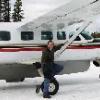
Sign in to follow this
Followers
0

Follow-up Question - Odd Massive Exclude of Autogen
By
1st fltsimguy, in FSX | FSX-SE Scenery Design Forum - How To


By
1st fltsimguy, in FSX | FSX-SE Scenery Design Forum - How To